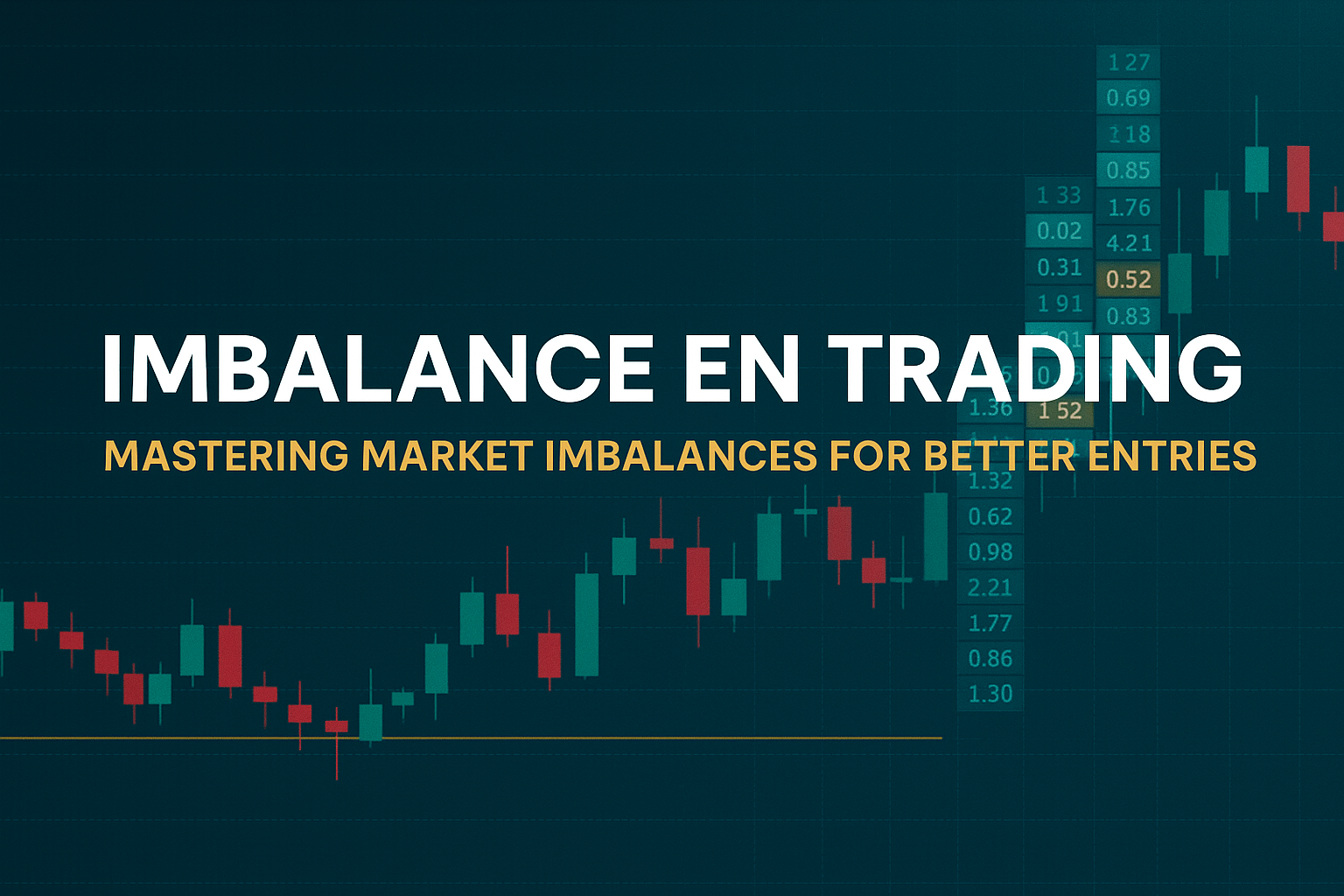Imbalance en Trading: Mastering Market Imbalances for Better Entries
In professional trading, understanding how market imbalances form and more importantly, Imbalance en Trading how they get filled can give you a serious edge. Whether you’re trading futures, forex, or stocks, recognizing an imbalance in trading is essential for anticipating sharp price moves with more accuracy and confidence.
In this blog, we’ll break down:
-
What a market imbalance is
-
How imbalance fills work
-
How to trade these zones effectively
-
Why orderflow is critical in confirming trades
-
Where imbalances usually form
-
And how to apply this knowledge in your own strategy
Let’s dive in.
What Is a Market Imbalance? Imbalance en Trading
A market imbalance happens when there’s a clear dominance of buying or selling at a certain price level. This typically results in a price “jump” due to a lack of opposing orders. As a result, price moves quickly in one direction without much resistance.
You’ll often see:
-
Strong bullish candles with no resistance
-
Sharp declines with little buying support
-
One-sided volume spikes and thin liquidity zones
These moments represent a breakdown in the natural auction process, where price moves too quickly through levels without sufficient back-and-forth trading.
Therefore, it’s crucial to identify these zones early. Using orderflow tools like footprint charts and volume profiles, traders can literally see where this imbalance occurred where buyers overpowered sellers or vice versa.
What Is an Imbalance Fill? Imbalance en Trading
A key concept in imbalance in trading is the imbalance fill. This occurs when the market returns to a previously unbalanced price zone and “completes the auction” by trading through it.
But why does this happen?
-
To fill in skipped liquidity
-
To complete institutional order flow
-
To retest unfinished business before the next leg
Depending on the context, an imbalance fill can act as:
-
A reversal point (if opposite pressure re-enters strongly)
-
A continuation zone (if the initial direction remains dominant)
-
A precise entry level for smart traders
In other words, imbalance fills are not just price revisits—they’re opportunities. By using tools like delta volume, bid/ask pressure, and heatmaps, traders can anticipate these fills and enter with precision—not guesswork.
How to Trade Imbalances Effectively
Now that you understand what imbalance zones are, let’s look at how to trade them in a structured and effective way.
1. Identify the imbalance zone
Look for impulsive moves, large delta shifts, or low volume nodes. These are the areas where price moved with force and little opposition.
2. Wait for the return
Instead of jumping in immediately, allow price to come back to the zone. Patience is key here, as this gives the market time to retest and expose its intent.
3. Confirm the fill
Use orderflow signals: footprint charts, delta divergence, or absorption patterns. This confirmation separates professional setups from emotional trades.
4. Enter the trade
Once confirmed, execute your trade with a clear stop just beyond the zone. This helps protect your risk and improves the reward-to-risk ratio.
5. Monitor for continuation or rejection
Finally, observe how price behaves after the fill. Is it absorbed, rejected, or does momentum return? This tells you whether to hold or reduce risk.
Where Do Imbalances Usually Occur?
Imbalances aren’t random. They tend to appear around specific high-activity events, which you can anticipate with proper planning.
Most commonly, you’ll find imbalances:
-
During market opens (London, NYSE, Futures session open)
-
After high-impact news events
-
Around psychological levels (e.g., 1.2000 or 15,000)
-
During liquidity grabs or stop hunts
-
At key breakout or fakeout levels
By combining these zones with orderflow confirmation, you dramatically increase your chance of success. Consequently, this is where many institutional-style traders find their edge.
Why Liquidity & Orderflow Are Essential / Imbalance en Trading
To truly master imbalance in trading, you must go beyond price action. You need to understand what’s happening inside each move. This is where orderflow trading becomes essential.
With the right tools, you can:
-
Track real-time buy/sell imbalances
-
See volume absorption at key levels
-
Detect delta divergence during imbalance fills
-
Spot aggressive entries by institutional players
Because of this, orderflow doesn’t just add an extra layer—it transforms how you see the market. You stop reacting to price and start interpreting intent, which is what truly moves the market.
If you’re serious about taking your skills to the next level, the Orderflow Trading Masterclass is a proven way to get there. This training covers everything from footprint reading to delta shifts and real-world examples.
Final Thoughts: Trading Smarter with Imbalance
Understanding imbalance in trading changes how you approach the markets. It removes much of the guesswork and instead gives you a logical, data-backed edge.
To recap:
-
A market imbalance shows where price moved with urgency and one-sided intent
-
These zones often become magnets for price to revisit (imbalance fills)
-
Smart traders use these fills for precise entries and exits
-
Orderflow trading confirms those zones in real time
If you’re ready to stop relying on surface-level indicators and start reading the actual mechanics of the market, it’s time to upgrade your tools and your knowledge.
Next Steps
Learn It:
Orderflow Trading Masterclass
Master footprint charts, delta, volume clusters, imbalance fills, and more to build confidence in every trade.
Trade It:
Open an account with IC Markets
Access raw spreads, deep liquidity, and true market depth—ideal for executing orderflow-based strategies in real-time conditions.
Imbalance reveals the truth. Orderflow confirms it.
The edge is real-time. The edge is yours.









